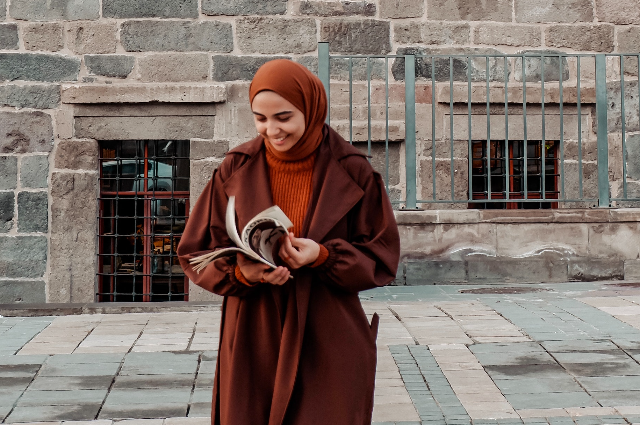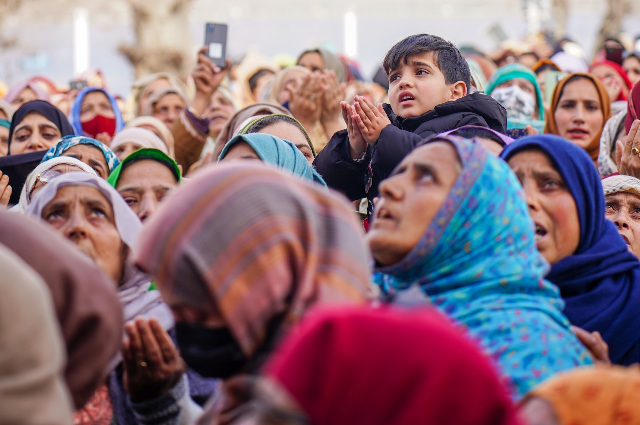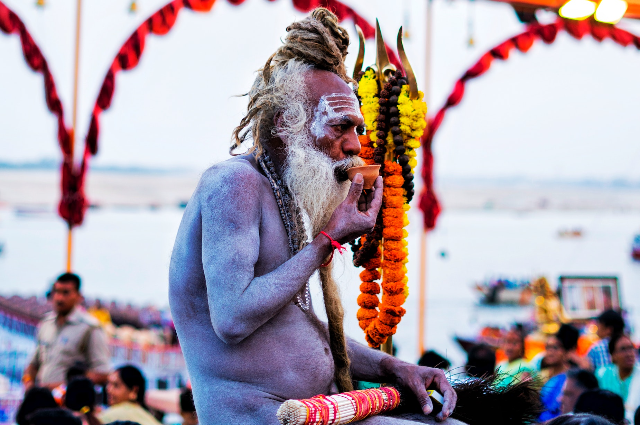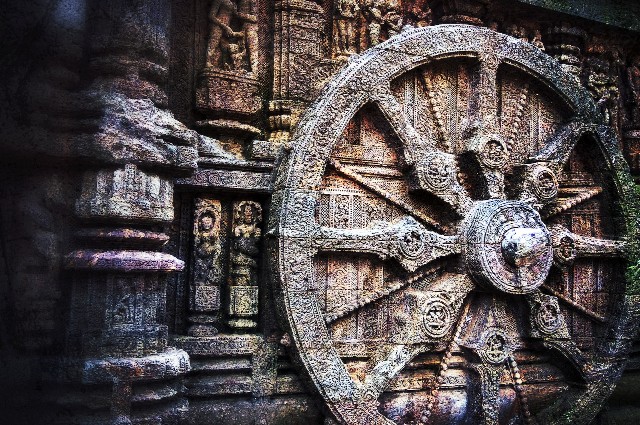
Introduction
The headscarf is not “fundamental” to Islam, as per the High Court of Karnataka. The state’s regulation forbidding students from wearing headscarves at college was likewise maintained by the Court. The decision follows a months-long, tumultuous discussion around the Hijab. In January, protests erupted after a Karnataka college decided to bar Muslim students wearing headscarves from entering. The case reached the High Court after some Muslim women protestors filed petitions alleging that the Indian constitution allowed them to wear headscarves.
Religion is made up of a set of beliefs or doctrines that individuals follow to improve their spiritual well-being and belief. Furthermore, it is unfair to suggest that religion is nothing more than faith.
A religion may prescribe rituals, rites, and practices that are deemed essential to the religion, such as clothing and food.
As a result, the definition of religion is so broad that it is critical to examine not just food and clothing, but also a variety of various methods of worship, with substantial differences. As a result, the Hijab is a fashion statement. Furthermore, when the word "practice" is used in Article 25 of the Indian constitution, it means "any practice that is exercised by a religious community must be accepted.
However, a detailed analysis is indeed inevitable to find out the constitutionality of this judgment provided by the Karnataka High Court the on Hijab. The essentiality test and the very judgment of the case came into discussion.
Quick Scan to the issue
A judgment of the High Court in the state of Karnataka (Resham & Others v. the State of Karnataka, Rep. by the Principal Secretary & Others) declared that the headscarf is not "essential" to Islam. The Court also upheld the state government's regulation prohibiting students from wearing headscarves in college. The decision comes after a months-long, contentious debate over the Hijab. Protests erupted in January after a Karnataka college decided to prevent Muslim girls wearing the Hijab from entering. After protesters filed petitions claiming that the Indian constitution allowed them the freedom to wear headscarves, the case reached the High Court. According to the three judges (The Honourable Chief Justice Mr Ritu Raj Awasthi, The Honourable Mr Justice Krishna S. Dixit & The Honourable Ms Justice J.M. Khazi), allowing Muslim women to wear the Hijab in classrooms would impede their emancipation and go against the constitutional morals of “positive secularism,” The 129-page judgment uses passages from the Quran and academic experts to argue that wearing the headscarf is not essential to the religion Islam. This is where this paper questions and analyses the practice that the Indian constitution extends to the people.
Test of Essentiality in Religious Practices
The Constituent Assembly widely discussed the significance of religion in a democratic state prolifically. Though there were several meanings for the term "secularism," the basic idea was the same: in a democracy, the state had no involvement in religion. Our constitution's articles have a concise description of this concept. Notwithstanding, the constituent also included “freedom of conscience and free profession, practise, and propagation of religion” in the constitution and “Freedom to maintain religious affairs” in Part IV of the Constitution, which covered the justiciable fundamental rights of the country’s residents, it purposefully accepted a situation in which one of the state’s three organs, that is the judiciary, had to interweave with religious concerns.
The constitution's equal aspect principle of secularism is represented in Articles 25 and 26. Every person has the right to freedom of conscience and religion, public order, health, morality, and constitutionally protected fundamental rights, as per Article 25. Article 26 expands on this by allowing people to handle their religious matters. Article 26 is influenced by several variables, including public order, health, and morality. As a result of interpreting the scope of these two articles, the concept of necessary religious practices emerges.
The essentiality test was established by the Supreme Court in 1954 with The Commissioner, Hindu Religious Endowments, Madras v. Sri Lakshmindra Thirtha Swamiar of Shri Shirur Mutt case judgment. The seven-judge bench has taken a broad interpretation of religion as protected by Articles 25 and 26.
It stated that religious freedom included not just religious thoughts but also religious beliefs and practices.
The Supreme Court eventually adopted this approach in the case of Ratilal Panachand Gandhi v State of Bombay, which was decided by the constitutional bench.

“No outside authority has the right to argue that these are not fundamental aspects of religion, the Court stated in this instance, and it is not open to the secular authority of the State to restrict or prohibit them in any manner they choose under the pretense of running the trust estate.”
As mentioned earlier the 'Shirur Mutt' case in 1954, a seven-judge Supreme Court bench created the idea of "essentiality." The Court developed a contesting theory to safeguard just those religious acts that were fundamental and integral to the religion. The Court decided that the term "religion" encompasses all "integral" religious rituals and practices, and it assumed responsibility for establishing what constitutes essential and non-essential religious practices.
Anyhow the Court somehow misunderstood the essential religious practice and the doctrine and started interpreting the particles are only essential to religion if the absence of such practices shoves them out of the religion. But here they close their sense on the fact that it is in the scriptures or it is been in practice for a long time and then grant the practice the protection of being essential under article 25 of the constitution. The Supreme Court also stated in the case Ratilal Panachand Gandhi v. The State of Bombay and Ors, Every person has basic freedom to entertain such religious ideas as may be authorized by his judgment or conscience.”
Headscarf Karnataka High Court Judgment
The judgment of the Karnataka High Court which contains 129 pages and which was after hearing 7 writ petitions, started the order by stating that Sara Slininger of Centralia, Illinois, ended her well-researched study "VEILED WOMEN: HIJAB, RELIGION, AND CULTURAL PRACTICE-2013" with the following conclusion:
“The Hijab’s history…is a complex one, influenced by the intersection of religion and culture over time. While some women no doubt veil themselves because of the pressure put on them by society, others do so by choice for many reasons. The veil appears on the surface to be a simple thing. That simplicity is deceiving, as the Hijab represents the beliefs and practices of those who wear it or choose not to and the understandings and misunderstandings of those who observe it being worn. Its complexity lies behind the veil.”
Anyhow, the questions before the Court are categorized into 4 issues, they are:
1. Whether wearing a Hijab /headscarf a part of ‘essential religious practice’ in the Islamic Faith protected under Article 25 of the Constitution?
2. Whether prescription of school uniform is not legally permissible, as being violative of petitioners Fundamental Rights inter alia guaranteed under Articles, 19(1)(a), (i.e., freedom of expression) and 21, (i.e., privacy 3.) of the Constitution?
3. Whether the Government Order dated 0 5.02.2022 apart from being incompetent issued without application of mind and further manifestly arbitrary and therefore, violates Articles 14 & 15 of the Constitution?
4. Whether any case made out in W.P.No.2146/2022 for issuance of a direction for initiating disciplinary inquiry against respondents Nos.6 to 14 and for issuance of a Writ of Quo Warranto against respondents Nos.15 & 16?
And in short, the judgment was directed to many discussions alike:
- Secularism and freedom of conscience & Religion under Our Constitution.
- The constitutional right to religion and restrictions thereon.
- Protection of essential religious practice and the test for its ascertainment.
- Sources of Islamic law, the holy Quran being its principal source.
- As to the Hijab being a Qur’anic injunction.
- Views of other High Courts on the Hijab being an essential religious practice.
- Wearing a Hijab is a matter of freedom of conscience.
- Proof of essential religious practice
- School discipline & uniform and power to prescribe
- Prescription of school uniforms to the exclusion of Hijab violates articles, 14, 15, 19(1) (a) & 21.
- Validity of government circular dated 31.1.2014 concerning the formation of school betterment (development) committees.
- International emancipation of women.
- The public interest litigation.
At last, the Court stated:
“In the above circumstances, all these petitions being devoid of merits, are liable to be and accordingly are dismissed. Because of dismissal of these Writ Petitions, all pending applications pale into insignificance and are accordingly, disposed of.”
Analyzing the Headscarf Judgment
Judges who are not theologians and probably they are not experts in the religion too. The Karnataka High Court's decision on the Hijab issue was an attempt to assign themselves the authority of judging which practices and beliefs are essential and integral to religion and which are not. Although judges in Karnataka were called up to determine whether the state of Karnataka's restrictions were legitimate restrictions or not. The difficulty is where the Judges had to look at it in the first place, which is due to the following factors:
These two tests are sufficient to allow a judge to evaluate the evidence and determine whether a specific practice is religious or not, in other words, whether it is an element of religion or not.
Should judges be required to investigate this matter if they are ordered to do so?
Why can't they just apologize and say that this is beyond our judicial jurisdiction, because we are not experts in any faith, and we are not experts in theology, and that you could be wanting to take this to the inaccurate authority? As it is stated a judge out of jurisdiction is compelled to do. Even though, in this case, the petitioners questioned the restrictions imposed by the state of Karnataka on the ground that it interferes with their fundamental right to religion and religious practice as also to the freedom of speech and expression which would also include religion. Therefore, once you have to test the particular action of the government, the judges have to go into it. But still, factors such as the Conscience of the Community and The Tenets of Religion must also be looked at.
Tenets of the Faith
Judges rely on professionals to evaluate whether something is significant or essential to the tenets of the faith because they are not knowledgeable or informed enough to do so on their own. And what the Karnataka High Court relied upon Abdullah Yusuf Ali and Sara Slininger. While academicians and intellectuals from various walks of life are questioning the judiciary’s right to decide on religious essentials, as the Karnataka High Court did on the question of Hijab, a reading of the judgment reveals that it solely relied on the interpretations of Qur’anic verses concerning Hijab from Abdullah Yusuf Ali’s commentary on the Holy Quran. The judges found that the Hijab is not a fundamental part of the Islamic faith based on Ali’s commentary and analysis. That creates a further problem because even If the expends end up saying different things which are not necessarily the same,
how do judges determine between them?
And it is believed that Judges who are not theologians and probably they are not experts in religion too thus, judges don’t have the capacity of knowing who is right and who is wrong.
In the judgments of Shri A.S. Narayana Deekshitulu v. State of Andhra Pradesh & Ors , According to the Supreme Court's Constitution bench, every action performed by Hindus in a day is religious, from the moment they are born to the moment they die, as per smriti. Now, if that is the kind of a wide definition that judges have adopted when it comes to Hinduism because a Court is intended to apply a secular concept to a religious matter, there is no need for any judge to be involved. As a result, the judges could not have said that a practice that has been practiced in Islam for a long time, whether it is out of the religious scriptures or not, is unconstitutional. The moment it becomes a practice because the right to religion is not only the inner aspect of the religion that people perform but the right to religion also entitles people to exhibit the religious practices. And that exhibition includes the right to food or write, especially when it comes to the right to dress.

In reality, it's a crucial point: every daily ritual is a part of the faith in the sense that there is nothing in the faith that isn't necessary.
Faith necessitates everything. And if that notion is applied to Islam, then everything is fundamental to Islam. As a result, if you consider it as a precedent, Courts will have no reason to investigate what people do as part of their faith is essential to their faithfulness.
The constitutional frameworks did not define religion because it is incapable of definition, but they knew what religion in India meant to everybody. And that practice, therefore, is essential to the faith of the people who believe in that religion.
Now, judges can only decide what is important and integral and what is not essential and integral based on expert opinion. But what is interesting is the experts also with disagreeing other experts ‘opinions and therefore the judges have a problem deciding which expert do they go with? And there arises a second problem. Many religions are divided into sects, with significant variances in what they deem fundamental and essential, as well as what they consider peripheral. Once again, how do judges distinguish between sects' beliefs? Because sects can be at odds with one another. However, when a judge is asked to pronounce the essential character of faith or belief, he is forced to choose between distinct sects that disagree about what is important. Hence, it's very challenging task.
For instance, see Article 25, which protects the conscience and also allows the practice. It also protects the practices of religion. So, what exactly are these practices? These are the practices that individuals and communities genuinely believe to be practiced. That's what it's there for; we don't need to engage in a lengthy academic or legal dispute for that. Any judge with his eyes open would have agreed that Muslims had worn Hijabs for generations. Thud, the Hijab is considered an important aspect of the Islamic religion.
Also Consider, naga sadhus; can anyone complain about their habits? Its devotees have done their worship in a unique way for generations, without wearing any clothing. Take the Digambar Jains who don't wear anything. Today, we might suggest that it is against morals, particularly modern morality and that it should be forbidden. However, this is not the case, because all of these practices are religious and have been recognized, revered, and adored for ages.

In a sense these underlays the Karnataka High Court judgment. Do they determine the essential integral nature of the Hijab based on how many people wear it? How widely is it worn? The fact is that this is the wrong way of thinking. For instance, the kirpan (steel sword) is essential to the Sikh Faith as it’s one of the essential five k’s of their Faith. Despite the fact that the vast majority of Sikhs do not wear a kirpan, this does not negate the importance of the kirpan in the Sikh faith. If the Hijab is treated in the same way. The great majority of Muslims do not practise the Hijab. Therefore, this does not negate the importance of wearing a Hijab. Hence it doesn’t mean that the Hijab is not essential to the religion of Islam. Surly for those who want to wear it, it is essential to them because it is critical in relating to them.

The Supreme Court has said in a long judgment that religious practices are something which you know a section of the community may follow or a section the community may not follow, and this does not cease to be a religious practice of a particular religion. Thus, a test that the High Court has adopted is a completely wrong test. The constitution bench in the judgment of The Commissioner religious endowment v. Sri Lakshmindra Thirtha Swamiar, which has held the last sixty-eight years States:
“The well-known religions in India like Buddhism and Jainism do not believe in God or any Intelligent First Cause. A religion undoubtedly has its basis in a system of beliefs or doctrines which are regarded by those who profess that religion as conducive to their spiritual well-being, but it would not be correct to say that religion is nothing else but a doctrine of belief. A religion may not only lay down a code of ethical rules for its followers to accept, but it might also prescribe rituals and observances, ceremonies, and modes of worship which are regarded as integral parts of religion, and these forms and observances might extend even to matters of food and dress.”
So, from this observation of the Court, it is, reasonable to state that
religion is founded on a set of beliefs or doctrines as those who claim that it contributes to their spiritual well-being and belief. Moreover, it is inappropriate to suggest that religion is nothing more than just faith because a religion can prescribe rituals, ceremonies, and, practices that are regarded as fundamental parts of the religion, and this also may even extend to these forms such as clothing and food.
Thus, this interpretation of Religion in this judgment is so wide that it is crucial not just food and dress but various forms of worship and their differences can be. Therefore, Hijab is precisely to do with the dress. So, if we go by the essentiality test, the way religion was described in the judgment means that Hijab is essential to the faith if those who wear it believe it is.
In a Judgment of Bombay High Court Parsi Panchayat Case in 1909, Jamshed K. Tarachand vs Soonabai , it is stated by justice Davar:
“If this is the belief of the community and it is proved undoubtedly to be the belief of the Zoroastrian community, a secular judge is bound to accept that Believe. It is not for to sit in judgment on that belief. He has no right to interfere with the conscience of a donor who makes a gift in fear of what he believes and to be the advancement of his religion in the welfare of his community or mankind.”
This Passage was approved by justice Reddy, O. Chinnappa in the famous case Bijoe Emmanuel & Ors v. State of Kerala & Ors (the Jehovah’s Witness case) where those young children refused to sing the national anthem.
If someone sincerely believes something to be a part of their faith, it is.
That passage clearly states that you cannot contradict a girl's belief that wearing a headscarf is necessary for her faith. As a result, the Karnataka High Court did not fully comprehend the judgment before applying it. The Court rather than failing to follow that judgment which is binding on the High Court also fails to understand the width of article 25 of the Indian constitution. Exercise is the best practice. It was given back in 1943 by an Australian chief John Latham which has been also approved by the Indian Supreme Court Bijoe Emmanuel & Ors v. State of Kerala & Ors and said that look.
“If communities exercising this kind of an act, then that becomes a religious act and Religious practice.”
Conscience Of Community
Now let's move on to the second issue. This case should not have been heard under article 25 since it is fundamental to religion, but rather under article 19 because it is a matter of freedom of expression and conscience. Article 14, Article 15, Article 25, Article 19 (1), (A) and Article 21. Each of these is a fundamental right that permits anyone professing to follow a specific religion and to claim that the state cannot interfere with it unless it is for the sake of public health or morality. These Articles are fundamental not because they are explicitly recognized as fundamental rights in the Indian constitution, but because they represent basic human principles that have been accepted for decades. As a result, when the constitutional founders sat down to design the constitution, they were faced with the challenge of ensuring that the state respects essential human values and that no one interferes with them, so they codified fundamental rights for each of them.
When it comes to religion and religious activity, those Articles come into play, and they need to be interpreted as broadly as possible. No doubt the judges are very learned and respected. But Judges can’t be living on a narrow compass, the judge must know the width of the constitution, a judge therefore when a question like this is raised before a learned judge. They had to see every single one of these articles, and bits of each of these articles, so you must first ensure that everyone is treated equally, that no one is discriminated against by the state based on religion, and that no one is denied admission to a state-funded institution based on religion or religious practices.

Everybody has a right to a religion which includes his conscience and practices equally freedom of speech and expression and right to live also would include the right to wear what you want to wear, so long as you are not violating the dress code substantially, here, in this case, the students Were denied even though they wore a uniform and putting a head scarf.
In 2020 The Hindu newspaper, States that:
“religious freedom is paramount importance, not because it is about religion, but because it is about freedom. ”
That is a principle that lies at the heart of a constitution and secondly, this is a principle that the Karnataka High Court either overlooked or completely forgot about.
During the constituent assembly debates, a large number of members told Dr Ambedkar that on the one hand, you are giving citizen’s rights, but on the other hand, you are carving out exceptions in sub-Articles 2 to 6 of Article 19, where the state has the power to curtail those rights, and that these will become meaningless. Dr Ambedkar was well aware of this, stating, “I would assume that the state will never abuse its powers in such a way that fundamental rights are whittled down in any way whatsoever. Yes, I believe that freedom is important. Is something so sacred, and the expression of freedom of any form of freedom, including religious freedom, freedom of conscience, freedom of speech and expression, and freedom of life dignity all must be so broadly defined by judges and so fiercely preserved by judges?
Is that no one can truly impose constraints that will embrace this type of situation?”

While drafting the constitution, both Ambedkar and Sardar Patel repeatedly told on the minorities committee issue that, the majority Hindus must put themselves in the shoes of the minority community to understand how they will feel, and that it is the responsibility of the majority to ensure that the minority is made to feel welcome in this country so that we can eventually integrate the minority with the majority.
Conclusion
The Hijab is a single scarf worn by most Muslim women all over the world since it is a requirement of Islam and the words of the Holy Quran. Religion is founded on a set of beliefs or doctrines as those who claim that it contributes to their spiritual well-being and belief. Moreover, it is inappropriate to suggest that religion is nothing more than just faith.
A religion can prescribe rituals, ceremonies, and, practices that are regarded as fundamental parts of the religion, and this also may even extend to these forms such as clothing and food.
Thus, this interpretation of Religion in this judgment is so wide that it is crucial not just food and dress but various forms of worship and their differences can be. Therefore, the Hijab is precisely to do with the dress.
. . .
Reference:
- Resham & Others v. State of Karnataka, Rep. by the Principal Secretary & Others, 2022(1) KCCR 865
- Karnataka Bureau, Hijab issue: Protests, counter-protests held, the Hindu (Karnataka), February 07, 2022.
- Pradhumna Mohan Dixit, The Doctrine of Essential Religious Practice: How Essential It Is, National Law University Odisha, (2021).
- The Constitution of India (1950), article 25 – 28.
- Bhagwati, P.N. “Religion and Secularism under the Indian Constitution.” Religion and Law in Independent India, edited by R.D. Baird. 2nd enlarged edition. New Delhi: Manohar. Pp. 35–49. (2005)
- The Commissioner, Hindu Religious Endowments, Madras v. Sri Lakshmindra Thirtha Swamiar of Shri Shirur Mutt, (1954) SCR 1005 [20].
- Ratilal Panachand Gandhi v State of Bombay, 1954 SCR 1055.
- Sara Slininger, veiled women: hijab, religion, and cultural Eastern Illinois University is a public university Charleston, p-78, (2013).
- Winnifred Fallers Sullivan, The religious expert in courts, open edition journal, p. 41-60, 2011. Also available at https://doi.org.
- Wani, M. A. FREEDOM OF CONSCIENCE: CONSTITUTIONAL FOUNDATIONS AND LIMITS. Journal of the Indian Law Institute, 42(2/4), 289–313. (2000). Also available at http://www.jstor.org.
- Sen, Ronojoy. Articles of Faith: Religion, Secularism and the Indian Supreme Court. New Delhi: Oxford University Press. (2010).
- Okebie, Chinomnso and Konstantinidou, Elina, Nature and Concepts of Expert Opinion in the Law of Evidence: Challenges and Opportunities for Judicial Reform (January 27, 2021). Queen Mary Law Research P- 349. (2021). Also available at: ssrn.com.
- Mariam Rawan Abdulla, Culture, Religion, and Freedom of Religion or Belief, journal of The Review of Faith & International Affairs, vol 16, pages 102 – 115, (2018). Also available at https://doi.org.
- Gaboardi, Marcello. “How Judges Can Think: The Use of Expert’s Knowledge as Proof in Civil Proceedings” Global Jurist, vol. 18, no. 1, p- 201. (2018). Also available at https://doi.org.
- Verdict, Hijab Verdict Based On Wrong Interpretation Of Quran' : Islamic Clerics Body Moves Supreme Court Against Karnataka HC Judgment, live law, Mar 2022. https://www.livelaw.in (Last visited on march 29, 2022)
- Shri A.S. Narayana Deekshitulu v. State of Andhra Pradesh & Ors, 1996 AIR 1765.
- Claerhout S, De Roover J. Religious Freedom and the Limits of Propagation: Conversion in the Constituent Assembly of India. Religions. 10(3) 157. (2019). Also available at https://doi.org.
- John Bishop, Faith, Stanford Encyclopedia of Philosophy, Jun, 2010. https://plato.stanford.edu/entries/faith/ (Last visited on march 29, 2022)
- Sardar Syedna Taher Saifuddin v. The State of Bombay, 1962 AIR 853.
- Commissioner of Police and Ors. v. Acharya Jagadishwarananda Avadhuta and Ors, 1984 AIR 512.
- S.R Bommai And Others v. Union Of India And Others, 1994 AIR 1918.
- Igor Pyrko, Thinking together: What makes Communities of Practice work? Human Relations, saga journals, (2016). Also available at https://doi.org.
- Rabout, Gilles. “Birth vs. Merit: Temple Priests and the Courts.” Filing Religion: State, Hinduism, and Courts of Law, edited by D. Berti, G. Tarabout, and R. Voix. New Delhi: Oxford University Gilles. G Pp. 3–33. (2016).
- Chakrabarty, Premangshu, Evolving Jainism: A Study on its Geography of Diffusion. Geographical review of India. 80. 170-184. (2018).
- Gurvinder Kalvolumeamaldeep Bhui, and Dinesh Bhugra, Does Guru Granth Sahib describe depression? Indian Journal of Psychiatry, Wolters Kluwer -- Medknow Publications, Indian J Psychiatry. Jan; 55(Suppl 2). (2013)
- The Commissioner religious endowment v. Sri Lakshmindra Thirtha Swamiar, AIR 1954 SC 282.
- Jamshed K. Tarachand vs Soonabai, (1908) 10 BOMLR 417.
- Bijoe Emmanuel & Ors v. State of Kerala, 1987 AIR 748.
- Christopher McCrudden, Human Dignity and Judicial Interpretation of Human Rights, European Journal of International Law, Volume 19, Issue 4, Pages 655–724 September, (2008). Also available at https://doi.org.
- Gilles Tara bout, Ruling on Rituals: Courts of Law and Religious Practices in Contemporary Hinduism, open edition journals, 2018. Also available at https://doi.org.
- Vang, Z.M., Hou, F. & Elder, K. Perceived Religious Discrimination, Religiosity, and Life Satisfaction. J Happiness Stud 20, 1913–1932. (2019). Also available at https://doi.org/10.1007/s10902-018-0032-x.
- Editorial. The Hindu newspaper. Religion and freedom: On India and communal violence, (2020).
- RAJU, K. H. C. Dr. B. R. AMBEDKAR AND MAKING OF THE CONSTITUTION: A Case Study of Indian Federalism. The Indian Journal of Political Science, 52(2), 153–164. (1991). Also available at http://www.jstor.org.
- B. N. Pandey. The Indian Nationalist Movement, 1885–1947. (1979)
